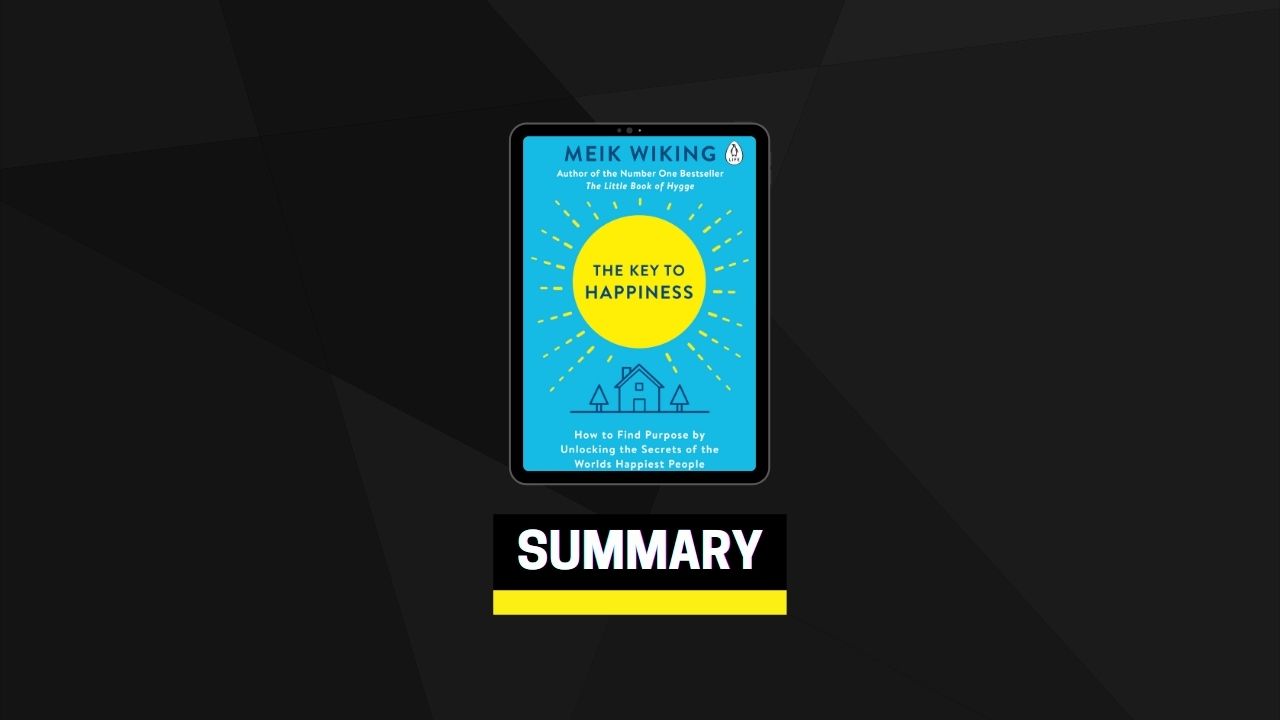How Do You Measure Happiness?
Happiness can mean different things to different people. You may have one perception of what happiness is, I may have another. Right now, we put the happiness label on different things, which, from a scientific point of view, makes it difficult to work around. So, the first thing we must do is to break the concept of happiness down into its various parts.
For instance, if we were to look at how the economy is doing, we could break it down into indicators such as GDP, growth and interest and unemployment rates. Each indicator gives us additional information about how the economy is doing. The same thing goes for happiness.
Togetherness
It’s clear that being part of a tribe has a positive effect on our well-being. So, let’s look at some concrete steps you can take to enhance the community spirit in your neighbourhood.
CREATE A DIRECTORY FOR YOUR STREET OR STAIRWAY
Knock on your neighbours’ doors and introduce yourself. Alternatively, for us introverts, drop a sign-up sheet in everyone’s letterbox. You can tell people that you are creating the list in case of burst pipes and other emergencies. Ask for names and contact information, but also consider adding a questionnaire to help you get to know people better.
ESTABLISH A BOOK-LENDING CUPBOARD
A simple way to start the conversation in your community is to establish a mini-library built on the take-one-leave-one-book principle. The library doesn’t have to be anything fancy or contain the entire collection of the Library of Alexandria.
USE THE SOFT EDGES
Spaces like this – front gardens and porches – are called soft edges, and studies show that streets with soft edges feel safer and people tend to stay in them longer. Just being out in front of your house gives a welcoming vibe that encourages interaction.
BUILD A COMMUNITY GARDEN
Your home may not offer any soft edges, but there might be a strip of land in your neighbourhood that can be used to create a small community garden – a time-tested way not only to grow a bunch of fresh veggies but also to cultivate a sense of community and for you to put down roots. Tending to your tomatoes is not only relaxing and meditative, it brings people in the local neighbourhood together and fosters the development of community spirit. In other words, it is a delicious way of creating a village atmosphere in a big city.
START A TOOL-SHARING PROGRAMME
The average power drill is used for only a few minutes per year, so there is no need for all of us to have one at home. Power drills, hammers, four different kinds of screwdriver – they all take up space; not to mention leaf-blowers and snow-blowers. A tool-sharing programme is also a good excuse to get to know your neighbours.
Money
Qatar, the richest country in the world, ranks thirty-fifth in the 2017 World Happiness Report, while a poorer country, Costa Rica, ranks twelfth. And some countries seem to be better at converting wealth into well-being for their people. For instance, the US is the eighteenth richest country in the world, with a GDP higher per capita than Denmark, Finland, Sweden and Iceland, but reports lower levels of happiness than all these countries.
This demonstrates two things. First, while money matters, it is not all that matters. Second, it is not only about how much money we make, it is also about what we do with the money we have. The most successful countries in the twenty-first century will be those that most efficiently turn wealth into well-being – and this also applies to the individual. So how do we get most bang for our buck when it comes to happiness?
BUY MEMORIES, NOT THINGS
According to researchers Dunn and Norton, if we are looking to buy happiness, it is wiser to invest in experiences rather than things, as ‘study after study [shows that] people are in a better mood when they reflect on their experiential purchases which they describe as “money well spent”’. If people are asked to compare purchases they made with the intent of increasing their happiness – one where they bought something tangible (like an iPhone, gold-plated or not) and one where they bought an experience (a trip, maybe) – and are then asked which purchase made them happier, 57 per cent will say the experience compared to 34 per cent the tangible object.
When it comes to money and happiness, while money may reduce misery and thus cause higher levels of life satisfaction, the reverse relationship – that happiness may lead to a higher income – may also be true.
At least, that is what Dr Jan-Emmanuel De Neve and Professor Andrew Oswald have found. Jan-Emmanuel is associate professor of economics and strategy at Said Business School at the University of Oxford – but, more importantly, a nice guy.
Health
MOVE MORE EACH DAY
Build more movement into your daily routine: take the stairs, have a meeting while going for a walk and park as far away from the supermarket entrance as possible.
The obvious tip here would be to start biking to work, or school, or anywhere. However, your city may not be ready for cycles, so getting your local city council to start investing in infrastructure for people, not cars, could be the first step on a long road. However, there are also some short-term solutions.
The reason why Danes exercise more than everybody in the EU is that they don’t see it as exercise. They see it as transportation. A small dose of fitness becomes part of your normal life instead of something you do in the gym.
This runs against the fact that we have built overly convenient societies – we sit still at work, we stand still on the escalator, we walk through doors that open automatically, we take the lift, we drive to the gym to train on the Stairmaster for an hour.
think the key lesson from the Danish way of living when it comes to health is to build movement into your daily routine.
INTO THE WILD
Visit the same spot in nature periodically over the course of a year and really be mindful as to how the landscape is changing each time.
Find and explore a forest. Take it slowly and forget about what would make a nice Instagram picture. Instead, listen to the wind in the leaves, watch the sun bounce off the branches, take a deep breath and see what smells you can detect. Try to visit the same spot several times a year, so you can appreciate how it changes over the seasons. Say hi to the first day of spring, summer, autumn and winter. Go alone or invite people to join you.
START TALKING ABOUT MENTAL HEALTH
Next time you ask someone how they are doing, have a real interest in their answer, and do not accept ‘fine’.
According to the Mental Health Foundation in the UK, nearly half of adults in the country believe that, in their lifetime, they have had a diagnosable mental health problem, yet only a third have received a diagnosis; and every week, one in six adults experiences symptoms of a common mental health problem, such as anxiety or depression. Don’t be afraid to ask friends, family members or colleagues the question ‘But how are you really doing?’ And don’t accept a one-word answer. On mentalhealth.gov (you’ll find it under the US Department of Health and Human Services), there is a lot of advice if you need to start a conversation with a friend or family member about mental health. It suggests ways to bring the subject up, such as ‘I’ve been worried about you. Can we talk about what you are experiencing? If not, who are you comfortable talking to? It seems like you are going through a difficult time. How can I help you to find help?’ Or ‘I am someone who cares and wants to listen. What do you want me to know about how you are feeling?’
Trust
TURN COMPETITION INTO COOPERATION
Change games of competition into games of cooperation by reconfiguring rules and goals.
In order to teach our kids the value and fun of cooperation over competition, perhaps we could tweak some classic games. We all know the game musical chairs, right? Ten kids; nine chairs; when the music stops you find a chair; if you don’t find one, you are out; one chair is removed each round, until there are two people and only one chair. So, basically, a mild version of Hunger Games for people who really like to sit.
This game also teaches our kids how to fight over scarce resources. And if you are one of the first to go out, you get to stand and watch the game instead of taking part. FUN! How about we turn it into a game of cooperation? We still start with ten kids and nine chairs but, when the music stops, we all sit – two kids share one chair. Well done. Now, we remove one chair but all the kids stay in the game. The music stops, and this time two chairs must seat two kids each. You get the picture. At the end, all ten kids try and fit on one chair together. Instead of teaching them how to compete, we teach them how to cooperate.
TRAIN YOUR EMPATHY MUSCLE
Read literary fiction and move beyond your normal social circles to get a better understanding of other people’s behaviour.
Put yourself in the shoes of others and pick up some literary fiction. Go for books like To Kill a Mockingbird by Harper Lee, The Great Gatsby by F. Scott Fitzgerald or The Grapes of Wrath by John Steinbeck. Find social blenders that allow you to move beyond your normal social circles. Visit places that voted in the opposite end of the political spectrum from you. If you listen to people’s stories, you may find that you might have made some of the same choices if you had lived their life rather than yours. We are not so very different; we just had different starting points. And while it is easy to stop listening and dismiss people we disagree with as ignorant, as evil and as the enemy, that will only lead us to misery. But perhaps if we listen we might learn that it is inequality, unfairness and injustice that are the enemy and that empathy, trust and cooperation are the way forward.


